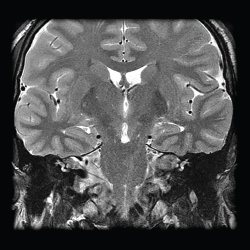Changes in AJCC Guidelines
Another development has been the release of American Joint Commission on Cancer (AJCC) guidelines for the treatment of oral and oropharyngeal squamous cell carcinomas, said Maie A. St. John, MD, PhD, the Thomas C. Calcaterra Chair in head and neck surgery at the University of California, Los Angeles (UCLA).
Explore This Issue
February 2020The new guidelines (CA Cancer J Clin. 2017;67:93-99) feature modifications and additions to staging head and neck cancer that were the result of “a multitude of studies,” said Dr. St. John, who is also co-director of the UCLA Head and Neck Cancer Program at the Jonsson Comprehensive Cancer Center. These include using depth of tumor invasion as a criterion for T designation, as well as novel staging systems for high-risk human papillomavirus (HPV)-positive cancers, and the inclusion of extranodal extension.
Within our lifetimes, I would suggest that we may also be giving the PD-1 inhibitors, because there are oral and subcutaneous versions coming on the market that look promising. —Robert L. Ferris, MD, PhD
“We knew from clinical experience and studies that patients with HPV-positive tumors had better outcomes than patients with HPV-negative tumors,” Dr. St. John said. “The new guidelines create a separate staging system for HPV-positive tumors, allowing more precise therapy for these patients. With advances in immunotherapy, a multitude of new possibilities are now in the pipeline for treating recurrent and metastatic head and neck tumors.”
Dr. St. John agreed with Dr. Grandis that treating head and neck cancers requires real-time multidisciplinary care. “A increasing number of institutions have signed on to this, where patients come in and are seen by a multitude of specialists in one afternoon,” Dr. St. John said. That strategy is also driven by the complexity of head and neck cancers. The tumors “occur in an anatomical region unmatched in the number of physiological functions potentially affected,” she explained.
Dr. St. John cautioned, however, against taking too narrow an approach. “The care of the head and neck cancer patient is the art of caring for the whole patient,” she said. “That should include multimodal surgical and medical management, aesthetic considerations, nutrition, pain management, and psychosocial support.”
Nikki Kean is a freelance medical writer based in New Jersey.
Farther Afield, Hints of NF2 Breakthrough

© Living Art Enterprises, LLC / Science Source
For some head and neck tumors, identifying signs of progress may require looking a bit beyond the core otolaryngology literature.